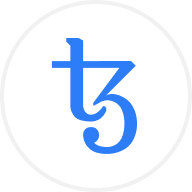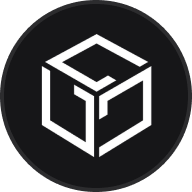Sandbox este o lume virtuală descentralizată pe blockchain-ul Ethereum, unde puteți crea, partaja și monetiza activele și jocurile voxel. Sandbox este o platformă play-to-earn (P2E) bazată pe Ethereum ai cărei creatori își propun să creeze o experiență imersivă în metavers fără o autoritate centralizată.
Jocurile tradiționale de construire a unei lumi virtuale bazate pe voxel, cum ar fi Minecraft, sunt jocuri centralizate în care utilizatorii nu au nicio proprietate asupra creațiilor lor sau a jocului. Sandbox rezolvă această problemă, permițând jucătorilor să construiască și să-și monetizeze experiențele de joc în blockchain-ul Ethereum.
Spre deosebire de jocurile tradiționale în care activele din joc există pe serverul companiei respective, fiecare obiect din metaversul Sandbox este un token nefungibil (NFT) pe blockchain-ul Ethereum, oferind unui utilizator proprietatea completă asupra articolului din joc. Creatorii din The Sandbox dețin astfel adevărata proprietate asupra creațiilor lor prin intermediul acestor NFT-uri. În plus, aceștia sunt recompensați pentru participarea lor cu SAND, tokenul utilitar al rețelei.
Deoarece ecosistemul Sandbox este alimentat de blockchain-ul Ethereum, toate execuțiile de contracte inteligente, transferurile NFT, tranzacțiile cu criptomonede și păstrarea evidenței sunt facilitate de rețeaua Ethereum. Acest lucru se realizează prin intermediul a trei produse de bază care alimentează aceste funcții pentru a ajuta utilizatorii să-și creeze lumea virtuală. Acestea sunt VoxEdit, Marketplace și Game Maker.
VoxEdit este un pachet de modelare voxel care permite utilizatorilor să creeze și să anime obiecte 3D. Aceste obiecte pot fi apoi exportate pe piața Sandbox ca ASSET-uri în joc. Piața este un magazin bazat pe web care conectează cumpărătorii și vânzătorii care tranzacționează NFT-uri ca active. Permite utilizatorilor să încarce, să publice și să-și vândă ASSET-urile ca tokeni ERC-721 și ERC-1155.
În sfârșit, Game Maker le permite utilizatorilor să adauge mecanisme de joc la elementele lor voxel prin intermediul nodurilor de script-uri vizuale, permițând utilizatorilor să creeze o experiență de joc captivantă pe terenul achiziționat. Utilizatorii pot folosi și Game Maker pentru a plasa active voxel în Sandbox LAND. LAND poate găzdui, de asemenea, concursuri și evenimente, să monetizeze active, să joace și să creeze jocuri, să voteze în guvernanță și să mizeze tokeni SAND. Sunt disponibile maximum 166.464 LAND.
SAND: tokenul nativ Sandbox
SAND este un token ERC-20 folosit pentru tranzacții în cadrul platformei, printre altele. Jucătorii cheltuiesc SAND pentru a accesa și juca jocuri, pentru a cumpăra echipamente și pentru a-și personaliza avatarurile. SAND poate fi folosit și pentru achiziționarea de active și LAND.
Un alt token nativ al metaversului The Sandbox este tokenul ASSET care poate fi cumpărat și vândut cu SAND. Utilizatorii pot crea și vinde tokenii ASSET pe Piață ca NFT-uri reprezentând articole din joc.
SAND funcționează și ca un token de guvernanță. Deținătorii pot vota deciziile privind viitorul The Sandbox prin intermediul organizație autonomă descentralizată (DAO) a platformei.
SAND poate fi, de asemenea, mizat, ceea ce permite obținerea de venituri pasive. În plus, tokenii SAND mizați pot câștiga și randament sub formă de Gems și Catalysts, care sunt utilizați pentru crearea ASSET.
Prețul și tokenomia SAND
SAND este un token deflaționist cu o aprovizionare finită de 3 miliarde. Din aprovizionarea totală, 360 de milioane de SAND au fost alocate vânzării platformei de lansare, 17,8% au fost păstrate pentru runda seed de vânzare, iar 4% din tokenii SAND au fost distribuiți în timpul unei vânzări strategice în iulie 2020.
Din rezervele SAND rămase, 12% din tokeni au fost dați Fundației Sandbox, 25,82% au fost alocați pentru rezerve, 19% din tokenii SAND au fost distribuiți fondatorilor și echipei, iar 10% din tokenii SAND au fost plătiți consilierilor.
Vânzarea seed și alocarea vânzării strategice au o perioadă de 12 luni, după care 20% din tokeni sunt deblocați la fiecare șase luni.
Veniturile generate de The Sandbox sunt distribuite între patru părți interesate pentru a asigura sprijinul continuu pentru ecosistemul său de jucători și creatori. Acești tokeni sunt distribuiți fondului fundației, fondului colectiv de staking, trezoreriei companiei și rezervei companiei.
Despre fondatori
Proiectul Sandbox a fost fondat în 2012 de Sébastien Borget, acum COO al Sandbox, și CEO Arthur Madrid.
Construit de Pixowl, o companie de dezvoltare de jocuri mobile din San Francisco, Sandbox a fost lansat inițial ca un joc mobil 2D, pe care l-au descărcat peste 40 de milioane de oameni.
În ianuarie 2018, Sandbox a decis să dezvolte o versiune 3D a jocului pe Ethereum. În plus, echipa Sandbox a dorit să ofere jucătorilor dreptul de proprietate 100% asupra articolelor lor din joc și posibilitatea de a-și monetiza jocul și activele. Mai târziu, în august 2018, Animoca Brands, principalul dezvoltator de jocuri blockchain, a achiziționat Pixowl.
Pentru a-și finanța viziunea, Sandbox a strâns 6,8 milioane USD în trei vânzări de tokeni în 2019 și 2020. În plus, compania a anunțat un grant de 2 milioane USD pentru creatori pentru a crea și a publica arta voxel pe platforma Sandbox.

















